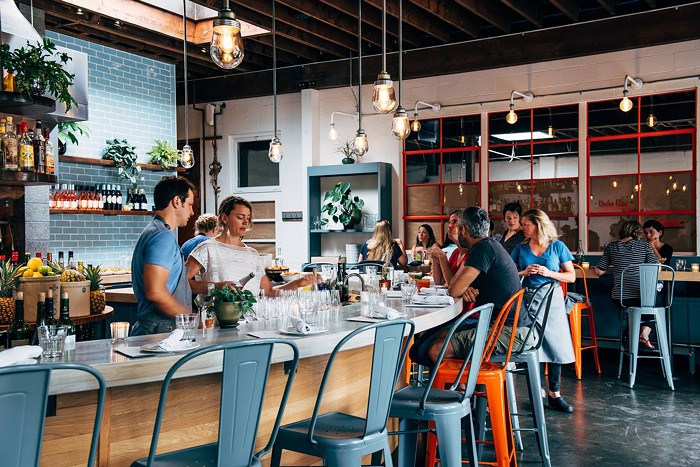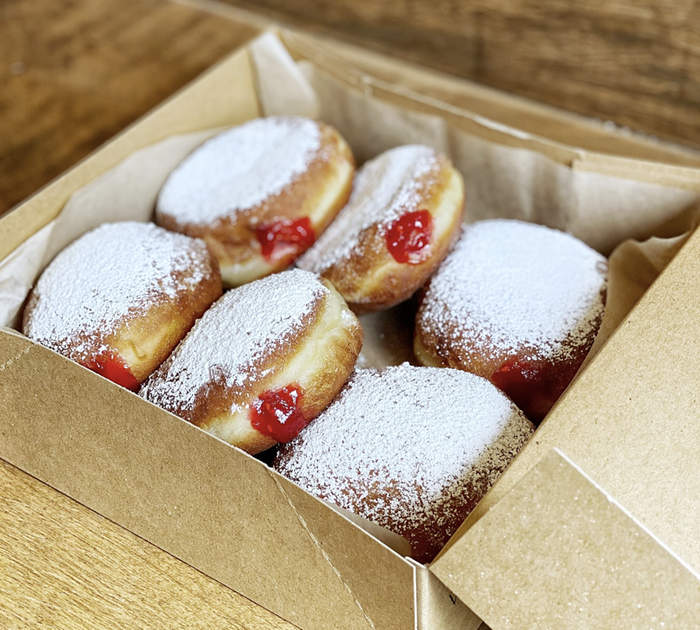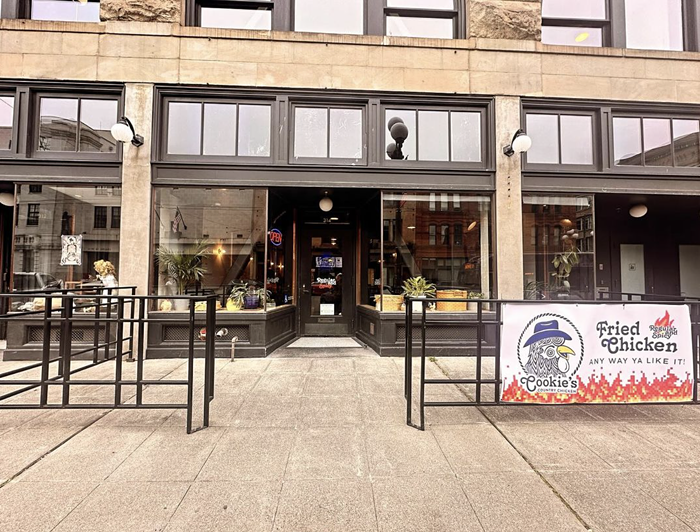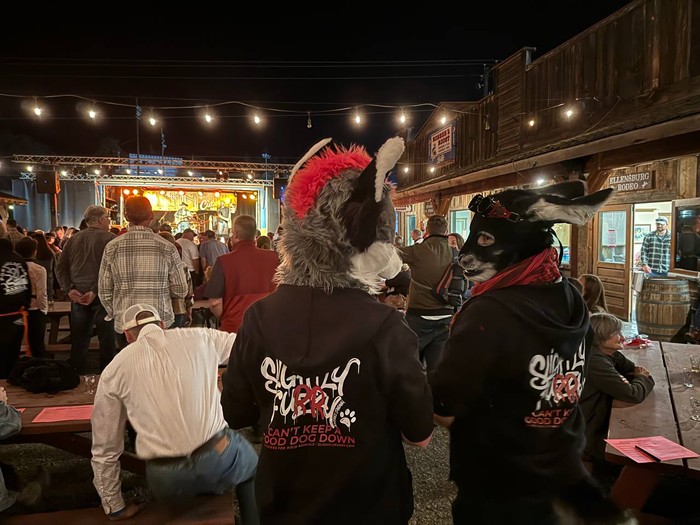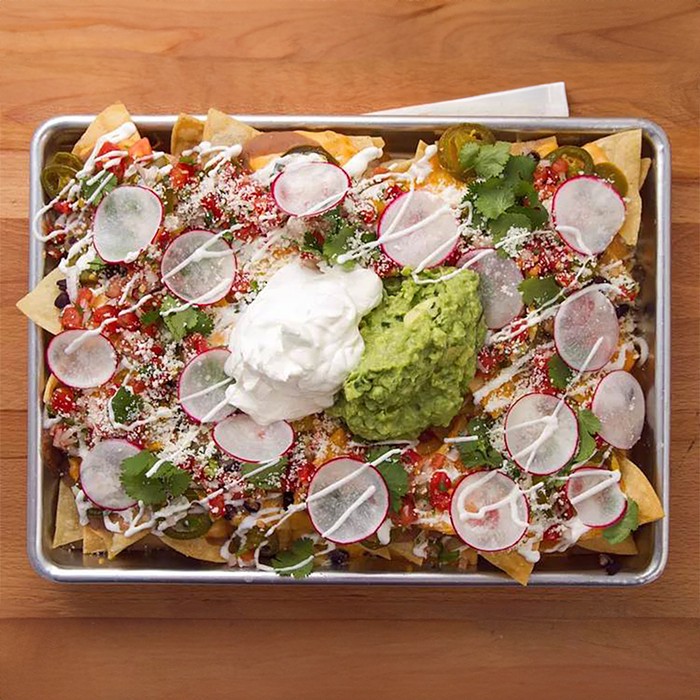
Of all the collective reactions humans could have had to the trauma of this year’s pandemic... what was up with all the bread?
“Bread has been around for thousands of years,” says Katherine Kehrli, “and it’s magical.”
Kehrli is Associate Dean of Seattle Culinary Academy at Seattle Central College, and she’s seen first-hand the transformative power of bread—though its origins are simple.
“It’s humble ingredients that you literally transform," she says. “The wheat berry is hard as a rock … But when you grind it, and mix it with water, and use natural leavening that you craft from the air, you get baguettes or ciabatta or if you add a little butter you get brioche.”
You also get one of the unlikeliest trends of 2020: A boom in home bread-baking, with trends rising and falling over the last few months from sourdough to ube to challah. It all started, of course, with the sourdough boom in March—but that certainly wasn’t the end of things.

“Sourdough became hot because you don’t need yeast,” says Sharon Davis, director of programs at the Home Baking Association. “And sourdough is delicious.” Davis noted that when lockdowns started in March, retail yeast flew off the shelves. Yeast-makers, accustomed to providing most of their product to retail bakeries in the form of giant bricks, weren’t able to keep up with demand.
“There was a black market in those bricks you can buy,” Davis says.

And who was behind this surge in home baking? Turns out this is yet another thing you can blame on millennials.
“It’s millennials who are the real buzz on home baking,” Davis says. She’s seen that social media has emerged as the second-leading teacher of home baking skills, right after parents.
“Millennials always want to do something that’s got a little signature to it,” she says. “They don’t mind getting out there and trying things.”
After the sourdough rush in March, new bakers tended to try foundational breads, like focaccia and various types of flatbreads, Davis says. “But when they conquered that, they were ready to make it a signature product. Banana bread became ginger banana bread. … As that success grew, then you saw these really beautiful embellishments,” like breads baked in special shapes or drizzled with brandy.
In the fall, ube started trending. A purple yam originally from the Philippines, it’s creamy and sweet and a versatile ingredient for all kinds of baked goods.

Now in the holidays, rich doughs are on everyone’s mind, like challah and loaves studded with fruit and nuts. Ginger and cinnamon are popular fall/winter embellishments, and Davis notes that “allspice has really upped its presence.”
There was an unpredictable alchemy to the year’s bread trends, borne partially of ingredient availability but also the magic of online culture.
“Typically when interest peaks, it’s because someone posted something that went viral,” says Tom Payne at Grindstone Sales and Marketing, a consulting firm that helps bring new foods to market. "Or a leading voice in baking (company or individual) recommended or demonstrated a particular recipe."
But there was another factor in the year’s baking surge: Helping those who’ve fallen on hard times. Earlier this year, Kehrli helped launch the Community Loaves project, which gathers bread from home bakers and distributes it to food banks around the state.
“We started with nineteen loaves donated on April 27,” she says. Before long, they’d reached their first goal of 400 loaves, which was based on one local pantry’s need for bread in a single day. “We went from 140 volunteers in our network to 462 in the last two and a half months,” she says, and they’ve just expanded into Oregon. For her work, Kehrli was honored with a World Bread Hero Award.
Looking forward, Davis predicts that we’ll next see growth in peasant loaves and hardy breads that go well with soups. Into 2021, she’s expecting to see more flatbreads like tortillas and wraps as the weather warms. “Flatbreads are really hot,” she says. “Focaccia is never going to fade.”
In general, home baking experts expect that the heightened interest in bread-baking will stick around. “I think the pandemic has certainly reacquainted people with the art of feeding themselves and preparing food at home,” says Kehrli. “If there’s a silver lining, it’s that people are reconnecting with what it takes to feed themselves. I suspect it’s here to stay.”
WHAT TO BAKE & WHEN
An analysis of search trends over the last year paints a portrait of the annual American bread-baking calendar. Here’s what trended seasonally across 2020, as well as in normal years—if “normal” years can ever be said to exist at this point.
Spring:
Sourdough came out of the gate swinging—while it’s not the simplest to prepare, it looks very impressive (particularly in a social media post) and doesn’t require yeast. Neither does banana bread, a handy recipe to have around for when the fruit starts to brown. Honey breads are also popular in the spring, accompanying the blossoming of flowers and availability of locally-sourced bee goo.

Summer:
Ube doughs got a big boost this year, in everything from pancakes to rolls to milk bread. Though it’s a little harder to find at big supermarket chains, the bright purple color makes quite an impression. Focaccia is always a popular summer bread, pairing well with cool salads and wraps. And although I can’t stand it, I suppose I must acknowledge that zucchini bread surges every July to September.

Fall:
Of course challah is the standout star every fall, coinciding with Rosh Hashanah in Septemberish. Fall’s also a popular time for cornbread, especially when combined with pumpkin; and biscuits get a little boost around November.

Winter:
This is the time for skillet breads, a no-knead preparation made right in the pan. It’s rustic and warm and cozy, and best when shared with a cuddle buddy. Also consider Panettone, an Italian sweet bread popular around Christmas. And if ever there was a time for rich dessert breads, it’s the dark of winter—go nuts with sweet breads, cinnamon rolls, coffee cakes, and my very favorite recipe that blurs the line between bread and cake, Sally Lunn buns.


